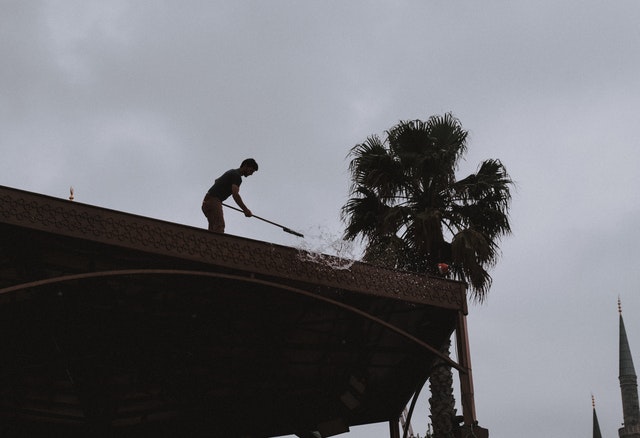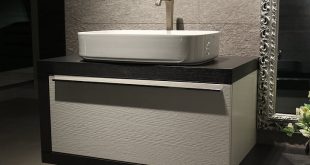How’s Your Roof Looking Today?
Over the course of time, your roof might start to look a little old and tired. You might notice it’s not as efficient at keeping the temperature in your home at its desired level. It may have also sustained some damage from water, smoke, or mould over the course of time.
If you’re considering replacing that old, worn roof, wait a minute! It could be that your roof is in need of a little attention and care rather than a full replacement:
That’s when you should consider a roof restoration and intense clean instead. This can also save a lot of money and upheaval.
Roof cleaning and gutter maintenance are important yet infrequent tasks you need to do to keep your home in top condition and looking smart. If you’re dealing with moss that’s stubborn to shift or you’re just not sure where to begin, this detailed article provides a step-by-step guide to cleaning your roof and surrounding gutters, including some vital safety considerations and a list of the equipment you’ll need to get the job done.
Basic Preventative Maintenance
Roofing professionals recommend establishing a regular preventative maintenance routine for your roof. This should comprise of roof cleaning and inspections twice a year, ideally in the spring and autumn due to weather conditions and also to deal with seasonal changes. An extended roof maintenance program can help preserve the longevity of your roof and keep significant issues to a minimum as well as saving you money.
Regular roof checks are critical for ensuring potential issues are identified before they reach a crisis point. “This not only helps to prevent major issues but also affords homeowners the time to plan any necessary expenses into their budgets. It also allows more time to file and process any essential warranty claims before repairs” says lifestyle blogger James Stinson at Write My Assignment.
A regular roof cleaning program can help preserve your home’s look and more importantly resale value. More importantly, it also reduces the risk of any damage to your roof or voiding of its warranty. Various debris like dirt, sap, and other materials on your roof can result in more than just a cosmetic issue. The accumulation of such organic matter promotes the growth of moss or lichen. Moss and lichen both retain moisture that can severely damage your roof. Unchecked moss growth may void some roofs’ warranties and even your homeowner’s insurance, making it even more problematic when trying to sell or reinsure.
Regular Roof Inspection
As mentioned earlier, inspecting your roof for any potential damage, defects, or build-up of debris and organic growth is critical to a specific and through preventative maintenance plan for your roof. Homeowners should conduct visual inspections twice annually, as well as after any major disasters or weather events. The main things to look out for during your roof survey include:
- Damaged or cracked caulking around flashing
- Rust spots on flashing
- Shingles that are buckling, curling, or blistering
- Missing or broken shingles
- Cracked or worn rubber boots around vent pipes
- Significant amounts of grit from the roofing material (mainly asphalt) in gutters
- Moss or lichen
Whether it is feasible or not for a homeowner to get up on the roof to conduct an inspection will depend on the type of roof and level of comfort of the homeowner – always consider safety during your thought process. Steep-slope roofs, especially those with delicate shingles, are highly susceptible to damage caused by improper weight distribution. Avoid walking on such roofs when possible. When using ladders on steep-slope shingle roofs, match the pitch of the ladder to that of the roof. This will distribute weight evenly and minimize the chance of accidental damage. If regular inspections at roof level are not possible, homeowners can conduct visual inspections from the ground using binoculars. If you have any doubt regarding the integrity of your roof, or you aren’t confident or experienced with heights – contact a roofing expert to perform this task for you.
Roof and Gutter Cleaning: What You’ll Need
These are key pieces of equipment you should have to before you begin:
- Ladder and a ladder strap to secure it / or person to secure the footing of the ladder
- Waterproof gloves.
- Safety goggles.
- Rubbish bag or bucket.
- Trowel or gutter scoop.
How to Clean Gutters
Gutter cleaning isn’t the most exciting of jobs, but it’s important in terms of overall household maintenance and, luckily, it doesn’t have to be too difficult. Here is a simple guide to roof gutter cleaning:
- Position your ladder safely against the area of gutter you wish to clean. Be sure to secure it with a ladder strap and/or make sure you have someone at the bottom to hold it.
- Climb the ladder with your gloves and rubbish bag or bin.
- Scoop out the waste by hand or using a small trowel.
- Place what you scoop out in your bucket or rubbish bag.
- Once you’ve cleaned that area, climb down, move the ladder to a new area within arm’s reach and start again.
- Be sure to clean in short segments only, as overreaching on a ladder is unsafe – take your time.
BE CAREFUL – Never climb on to a roof without taking the appropriate measures to ensure your safety and avoid falls:
Always let someone know you will be cleaning the roof and gutters and get them to help hold the ladder if they can. There are plenty of roofing experts who can easily perform this job.
How to Clean a Roof
Now your gutter is clear, what else do you need to do to get a good-as-new roof?
Consider rinsing down the gutters once empty to remove any residual debris and check for leaks. Check the downpipes and remove any blockages using pressurised water or your hands. For really thorough roof and gutter cleaning, consider removing moss from roof tiles. This will improve the look of your house and prevent the moss from falling into the gutters and blocking them again. After cleaning your roof and gutters, maintenance is key. These roof cleaning tips and gutter tricks can help you along the way:
- Aim to clean your gutters at least twice a year – particularly when the leaves are most likely to fall into the drains – as mentioned previously – with seasonal changes.
- Make sure your gutters are securely fastened. Sagging gutters have an increased chance to break.
- To find gutter leaks, try pouring water dyed with food colouring down them – it’ll be much easier to identify the damaged gutter.
- Leaks can be repaired with silicone caulk but larger leaks may need the gutter replacing altogether.
- Trim any trees that hang directly over your roof as these are likely to shed their leaves onto your house – this in the long run can reduce your workload of roof cleaning.
Tailoring Your Roof Cleaning Program to Your Roof
Asphalt Shingles
Asphalt shingle roofs are the most common type of roofs in the United States – especially in the residential setting. They are known for being low-maintenance, and the maintenance program outlined above should be sufficient to care for them. While there are no additional steps needed, it is essential to remember to avoid pressure washing asphalt shingle roofs. High pressure can cause major damage to shingles. It is also advisable to avoid using harsh products like bleach that could discolour or prematurely degrade the shingles. Be sure to watch out for granules from your asphalt shingles collecting in the gutters. While this is common on new roofs, it could indicate an older roof is nearing the end of its lifespan and may need replacing.
Clay & Concrete Tile
Cleaning tiles with harsh chemicals and pressure washers can erode tile coatings and paint. Roof cleaning in such abrasive ways makes it necessary to re-coat the seal and paint to protect the roof from dirt and moss infestation. Avoid cleaning using these such measures when possible. Tiles are also very fragile and can break easily under pressure. It is important to avoid walking on tile roofs. If it is necessary to be on your tile roof, use plywood with a foam layer on the other side. This spread your load and reduce pressure on the tiles.
Tiles may take on a pale coating (a whitish, chalk-like covering) as they dry. This is a result of salts crystallizing as water evaporates. Higher levels of humidity slow the evaporation of water which allows the salts to crystallize into efflorescence. Efflorescence does not damage tiles as such but will affect their colour. To remove this problem, incorporating buffing your dry roof with a clean cloth rug to your regular roof cleaning and maintenance program.
Wood Shake & Shingle
It is important to maintain wood shakes and shingles with care. Incorrect roof cleaning practices can damage wood shakes and shingles. Do not pressure washing your wood roof. Pressure washing causes wood shakes and shingles to lift or can trap water underneath them, causing leaks with chance to damage your home. It is also recommended to avoid using harsh chemicals like bleach or ammonia in wood roof cleaning. Such products may discolour paint and metal fixtures on your roof, and runoff may damage your garden and lawn and surrounding areas.
It is critical to ensure quick extraction of any moss or lichen on your wood roof. Moss growth on wood shingles or shakes has the potential to void your roof’s warranty. Add trimming back any branches hanging over your roof to your regular maintenance schedule. This will minimize the build-up of debris on your roof and will help to limit the growth of moss.
Cedar Shake & Shingle
Cedar shake roofs have specific needs which are different to that of other wood shingles but are similar in their cleaning and maintenance needs. The Cedar Shake & Shingle Bureau recommends ensuring overhanging branches are kept trimmed away from cedar roofs to prevent debris and moisture build-up. It is critical to keep cedar clean to allow it to breathe. Clean gutters and downspouts during your twice yearly checks and cleaning. Ventilation is crucial to keeping your cedar roof in good shape. Ensure that areas with louvers, ridge vents, roof vents, and soffit vents are clear and free of any blockage.
Again – it’s a common theme with most roofs but avoid pressure washing your cedar roof. Pressure washing should only be done by a trained professional extreme cases of moss and debris build up. Bleach and ammonia should be avoided to maintain good quality colour and condition.
Slate Shingle
Slate shingles are an aesthetically pleasing material for roofing but are delicate, gentle and costly to replace. Regular roof cleaning is critical for your roof, as slate is easy to cleave and more prone to being water absorbent. Build-up of moss and debris on slate roofs hold moisture in the slates that can split them during winter when temperatures drop and ice expands.
When cleaning a slate roof, again, don’t use chemicals like bleaches. Harsh chemicals are incompatible with the copper components of your slate roof. They can blemish your copper black or discolour a beautiful Verdigris patina. It is also important to note that due to their fragile nature never pressure wash your slate roof or even use too strong a blast from a garden hose. Pressure washing can break apart slates or drive water up under slates and cause leaks.
Metal
Metal roofing is extremely durable, but, on the flip side, it is more vulnerable to rust and corrosion. It is also important to prevent different types of metal from touching one another. Chemical reactions between metals can damage or discolour the metal. Ensure your metal roof is regularly cleaned and well maintained by using products that are safe and appropriate for the type of metal your roof is made of by checking product labels. Regular corrosion checks are vital to maintain top condition.
 World inside pictures Collect and share the best ideas that make our life easier
World inside pictures Collect and share the best ideas that make our life easier








